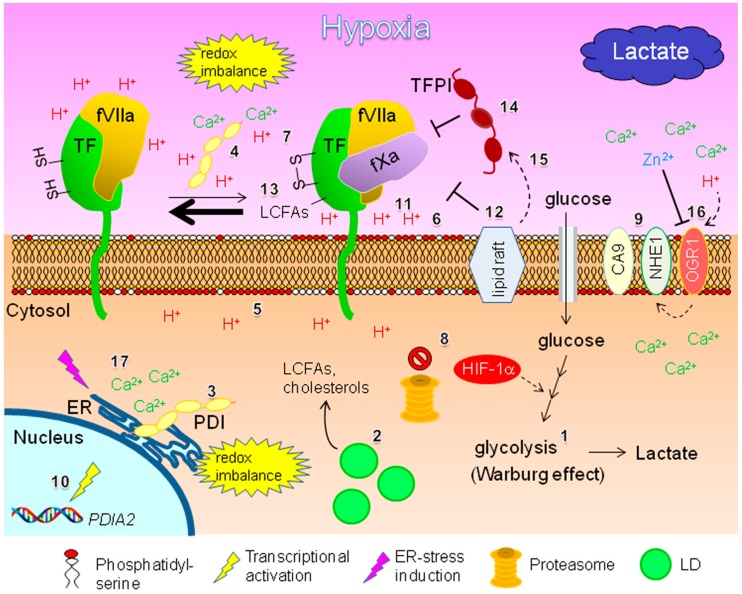Figure 4.
Potential contribution of protein disulfide isomerase (PDI) and various environmental factors in regulation of the TF-fVIIa complex on the surface of epithelial ovarian cancer (EOC) cells. Due to hypoxia, followed by acidification of tumor microenvironment (TME) by lactate production, the cell surface PDI is expected to be inhibited. In this case, TF shifts to its reduced inactive form (designated with the bold black arrow), although encrypted TF may still transmit signals [94]. Additionally, TF-fVIIa activity can be affected by various hypoxia-related cellular and environmental factors such as regulation of the PDIA2 gene, lipid metabolism, endoplasmic reticulum (ER) stress, proton exchanger molecules, phosphatidylserine, and metal ions. Dashed arrows and T-bars indicate the activation process and suppression process, respectively. LD: lipid droplet; TFPI: tissue factor pathway inhibitor-1; LCFAs: long chain fatty acids; HIF: hypoxia inducible factor. See text for numbers (1–17).

